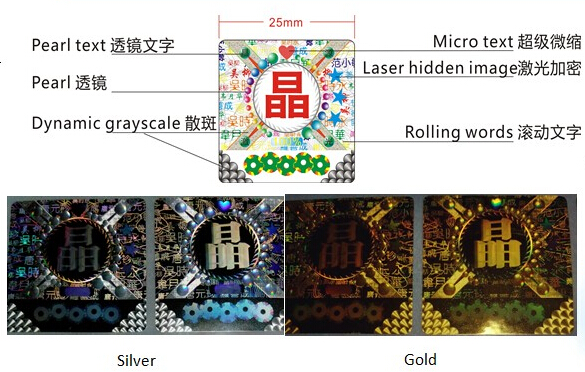Understanding of feasible technologies for nickel smelting pollution prevention
This guide is based on current technology development and application status, and can be used as reference technical data for pollution prevention and control work of nickel smelting projects.
This guide was proposed and organized by the Science and Technology Standards Department of the Ministry of Environmental Protection.
This guide was drafted by: China Enfei Engineering Technology Co., Ltd., China Metallurgical Construction Research Institute Co., Ltd.
This guide is explained by the Ministry of Environmental Protection.
1 general
1.1 Scope of application
This guide is intended for nickel smelting companies that handle nickel sulphide concentrates, nickel oxide ore (cementite nickel ore) and nickel-containing materials.
1.2 Terms and Definitions
1.2.1 Standard status
Refers to the state when the temperature is 273.15K and the pressure is 101325Pa. The concentrations of atmospheric pollutants covered in this guide are based on dry gas under standard conditions.
1.2.2 sanitary ventilation system
A mechanical exhaust device is installed at the production node where exhaust gas is generated, which controls the diffusion of dust and harmful gases, reduces unorganized emissions, creates a production environment that meets the requirements of labor hygiene, and ventilates the exhaust air as needed.
2 production process and pollutant discharge
2.1 Production process and pollution production
According to the ore composition, nickel smelting is divided into two major categories: copper sulfide nickel concentrate smelting and laterite ore (nickel oxide ore) smelting.
2.1.1 Nickel sulfide concentrate smelting
Nickel sulfide concentrate smelting mainly of nickel metal of high nickel matte and high mill floating electrolytic leaching of nickel matte electrodeposition methods.
The high-nickel honing float electrolysis method refers to the nickel smelting concentrate being first smelted by fire method to produce high nickel bismuth, the high nickel honing float separation copper and nickel and producing secondary nickel concentrate, and the second nickel concentrate is electrolyzing to produce electric nickel. . High-nickel honing float electrolysis produces metal nickel process and production.
The high nickel bismuth leaching electrowinning method means that the nickel sulphide concentrate is first smelted by fire to produce high nickel bismuth, and the high nickel bismuth is selectively leached to separate copper and nickel, and the leaching liquid purifies and separates the cobalt . High nickel niobium leaching electrowinning to produce metal nickel process and production.
2.1.2 Nickel oxide ore smelting
The smelting of nickel oxide ore (red earth nickel ore) mainly includes two methods of pyrometallurgical smelting and wet smelting.
Pyrometallurgical process (process RKEF) adapted to process at Disballance ore or nickel-based high humus, high magnesium and low iron ores. The main process flow is: rotary kiln drying → batching → roasting pre-reduction → electric furnace smelting → refining (or blowing), the product is nickel-iron alloy. The nickel-iron alloy and the vulcanizing agent are further smelted to convert nickel-iron into nickel lanthanum.
There are many types of ore suitable for wet smelting. Generally, the corresponding processes are adopted according to the different ore components. At present, there are three processes of high pressure acid leaching (HPAL), atmospheric pressure acid leaching (AL) and enhanced high pressure acid leaching (EHPAL). .
The high pressure acid leaching (HPAL) process is suitable for the treatment of limonite with low nickel, high iron and low magnesium. The main process is to add sulfuric acid to the autoclave, leaching nickel into sulfate under high temperature and high pressure, and iron to form hematite. After neutralization, washing, separation and impurity removal, the leaching solution uses hydrogen sulfide and magnesium oxide. Precipitation of lime or sodium hydroxide produces an intermediate product of mixed nickel-cobalt-cobalt or nickel-cobalt-cobalt. The intermediate product can be sold as a product or processed into a metal product.
The atmospheric pressure acid leaching (AL) process is suitable for the treatment of transitional residual ore containing 1.5% to 1.8% of low iron and high magnesium. The main processes include atmospheric pressure leaching, pre-neutralization, iron and vanadium iron removal, countercurrent washing, neutralization and impurity removal, precipitation, production of mixed nickel hydroxide cobalt intermediate products or continued processing into metal products.
Security Hologram Label Security
JingYuan offers security label and sticker for a variety of security applications to protect your products, event tickets, ID badges, etc.
The function as below:
1.Combat Counterfeiting and Fakes
2.Prevent Alterations3.Indicate Tampering
Our quality holograms feature affordable pricing and fast service.
Our security holograms combine stock and custom hologram images, tamper evident materials, consecutive serial numbers, barcodes, special inks and other materials to produce a product which meets your security and budget requirements.Our holographic security stickers also give your company logo, product or special promotion a distinctive look, which will enhance your image.
Kindly see below design file and the hologram effect for your reference.
We can accept OEM order.
Just need your logo in AI file, CDR, EPS file, tks.

Security Hologram Label Security,Security Hologram,Hologram Security Stickers,Hologram Printing Label
Shenzhen Tuteng Anti-Counterfeiting Co., Ltd. , https://www.szholographicsticer.com